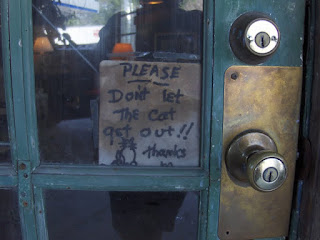Along the west coast shoreline of the Big Bend, the Gulf of Mexico is relatively shallow and the coastline low and marshy. Fishing camp towns and facilities that cater to cruising boats are beginning to open along the many shallow rivers and creeks.
The countryside is still undeveloped , even primitive in spots. This is Old Florida.
We enter the Withlacoochee River, which is north of Crystal River and is one of the very few rivers in the world that flow south to north. It is a pristine river with wonderful views of Cypress trees and an abundance of wildlife.
Traveling close behind us is Kurt and Pat on Krazy Kru, as we navigate, following the depth sounder, wary of the shoal waters as the sun is setting quickly.
You will see Eagles, Osprey, Hawks, King Fishers, Alligators, Turtles and much more. It is also a great River to catch Bass, Specs, Stump Knockers and Catfish.
These are fisherman's waters, both fresh and saltwater. The rivers are shallow and tricky, but the benefits are glorious coasting through the most pristeen Florida wilderness that time has forgotten.
The Withlacoochee River originates in central Florida’s Green Swamp. It flows west, then north, and then turns northwest and finally west again before it empties into the Gulf of Mexico in Yankeetown.
"Withlacoochee" is probably compounded of Creek we (water), thlako (big), and chee (little), or little big water. This word combination signifies little great river in the Creek language.
The Withlacoochee River is one of Nature Coast's deeper rivers. It carries about eight feet, although the charted controlling depth is four feet--the deep drafted shrimp boats based here attest to it's generous channel.
Largely undeveloped, the river is lined by thick vegetation, and apparently wildlife that is typical of the area.
The mean tidal range is 2.5 feet. Follow the river and you'll come to the marine facilities and fishing lodges in Yankeetown.
We pulled into Bee's Marina, about 3 miles from the entrance of the river. Helen, the proprietor was very helpful tying up in the cold as the sun was setting. This was a place that feels like time forgot and we only wish that we had more time to spend here, but we must take advantage of a good weather window tomorrow.
In the morning, we awake to a foggy mist, and prepare to leave in a very cold 45 degrees.
We quietly slide past Yankeetown, and with regret, we head towards the open waters of the Gulf of Mexico.
As we slide past the abundant bird estuaries and oyster beds, we watch the oystermen hard at work, scraping up the fruits of their labor.
It's like being transported back into another time. This is and was Old Florida.






























































